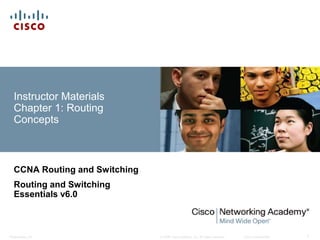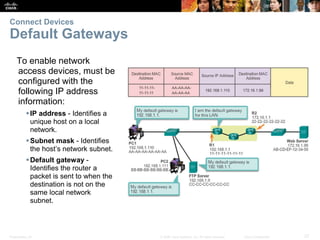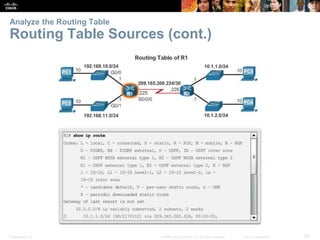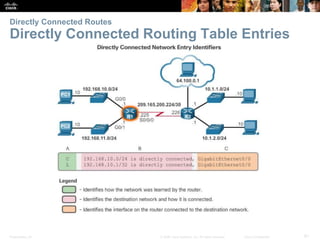This document provides an overview of routing concepts and router configuration. It covers the basic functions of routers, including routing decisions, packet forwarding methods, and building routing tables through directly connected networks, static routes, and dynamic routing protocols. The document also describes how to initially configure a router by setting the hostname, interfaces, and verifying connectivity between networks.























![Presentation_ID 37© 2008 Cisco Systems, Inc. All rights reserved. Cisco Confidential
Router Basic Settings
Configure an IPv6 Router Interface
Configure interface with IPv6 address and subnet mask:
Use the ipv6 address ipv6-address/ipv6-length [link-local | eui-64]interface configuration
command.
Activate using the no shutdown command.](https://image.slidesharecdn.com/rse6instructormaterialschapter1-171026033043/85/CCNA2-Verson6-Chapter1-24-320.jpg)







































